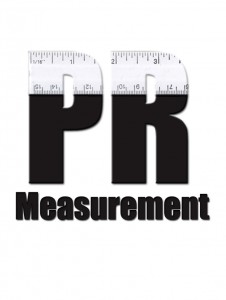 By Emily DiTomo & Emily Geesaman
By Emily DiTomo & Emily Geesaman
Last week, representatives from Buchanan PR had the opportunity to attend a PRSA Philadelphia seminar on “The Principles of Measurement: Best Practices and Real-Life Case Studies.” Presented by Ketchum Global Research & Analytics’ Caroline Eichman and Mary Elizabeth Germaine, the event focused on the seminal question for all PR pros: How can we successfully apply the principles of measurement to public relations, and in turn demonstrate quantifiable ROI for what we do?
Eichman and Germaine, experts in all things measurement, first honed in on a group of seven principles – known as The Barcelona Principles – that serve as the foundation of communications measurement. Introduced for the first time in 2010, The Barcelona Principles break down the fundamentals of measurement and establish goal setting as the most important component of each and every measurement campaign. In the words of Germaine, “No good measurement plan will work if you don’t know where you’re starting from.”
Eichman and Germaine explained that once goals are established (remember to make them clear and quantifiable – “creating buzz” won’t cut it), PR success can be measured on three levels:
- Outputs
- Outcomes
- Business Results
Outputs examine the reach and content of media – both traditional and social. In traditional media, units of output measurement can include:
- Circulation/Reach
- Share of voice
- Tonality
- Message penetration
In social media, units of output measurement can include:
- Visits/fans/followers
- Active advocates
- Sentiment ratio
- Audience engagement
Outcomes, on the other hand, are defined by changes in perceptions and behavioral levels among target groups. Common units of outcome measurement include awareness, comprehension, recommendations and purchasing intentions.
The final metric by which PR can be measured is examining business results, or overall impact on organizations. Common units of measurement here include revenue/turnover, market share, stock price and employee retention.
While many large PR agencies rely on in-house research and analytics firms to develop and execute their measurement campaigns, Eichman and Germaine shared a number of ways smaller firms can implement similar tools in their own PR toolboxes. Examples include:
- Broadening the scope by which you define a media placement’s success. Was your client merely mentioned? Part of a round-up story? Did you place a feature story solely highlighting your client? Be sure to include these outputs in your measurement reports.
- Monitor for desired keywords. Look for these words in both traditional media coverage and social media conversations. Incorporate the results into an overall measurement of message effectiveness.
- Use surveys, no matter how brief, to help measure pre- and post-campaign sentiment. There is a preponderance of free and/or low-cost survey tools available to today’s PR pros. Check out SurveyMonkey and other similar programs to help measure a campaign’s outcomes.
While we’re not quite there yet, the PR industry is well on its way to using measurement consistently and effectively in all client campaigns. The days of Ad Value Equivalency (AVE) are long gone. Now, it’s up to us as agencies to counsel our clients on the best ways to evaluate their success. The process starts with setting specific goals and employing better analytics that capture the value of public perception. We’re confident that we’ll get there eventually – one metric at a time.